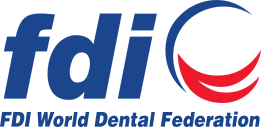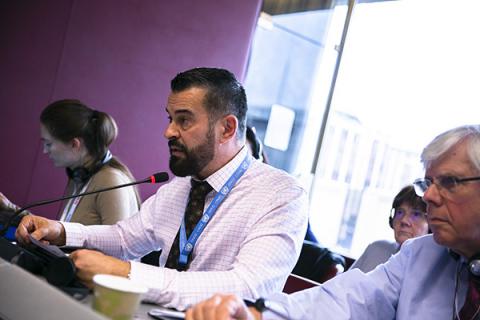Webinar: What dentists need to know about the Minamata Convention on Mercury
FDI World Dental Federation will host a webinar on 14 May 2019 on the Minamata Convention on Mercury and its impact on the dental profession. The Convention is a global treaty aimed to protect human health and the environment from anthropogenic emissions and releases of mercury and mercury compounds. It also contains nine provisions to phase down the use of dental amalgam.

A group of leading experts will explain the Convention’s dental amalgam phase-down provisions, the new EU dental amalgam regulations, best management practices, prevention and alternative materials, as well as the latest research on dental amalgam alternatives. The webinar will also discuss the upcoming third Meeting of the Parties to the Minamata Convention (COP3).
In the lead-up to the webinar, we interviewed the speakers.
Why does FDI support a phase down of dental amalgam?
Mr Enzo Bondioni
Executive Director, FDI World Dental Federation
Affordable alternatives to dental amalgam are not available everywhere. In many parts of the world, dental amalgam is often the only available resource to repair tooth decay. Therefore, FDI advocates a phase-down of this material. Prohibiting the use of dental amalgam before appropriate alternatives are available would negatively impact oral health from both an individual and population perspective. To successfully phase-down dental amalgam, there must be a greater emphasis on prevention, increased research on amalgam alternatives, and best management practices for amalgam waste.
Could you tell us a little bit about the recently compiled IADR report on alternative materials to dental amalgam?
Dr Chris Fox
Executive Director, International Association for Dental Research
The use of dental amalgam restorations has been declining as composite resin restorations have improved, largely for aesthetic reasons. Dentists and their patients understandably prefer restorations that match the tooth color. However, even though progress has been made, these alternative materials can still be inferior to dental amalgam in terms of cost, being technically more difficult to place, and having higher failure rates. Research is focused on improving the handling and clinical characteristics of these alternatives and to improve their longevity. IADR strongly supports the Minamata Convention on Mercury, including the phase-down of dental amalgam. However, until such time the research can deliver an alternative material that matches or exceeds all of the characteristics of dental amalgam, we support the continued availability of dental amalgam as a restorative option when alternatives are less than optimal for clinical, economic or practical reasons.
How do you think the new EU dental amalgam regulations are affecting oral health professionals in the EU?
Dr Susie Sanderson
President, British Dental Association
Dental teams in the EU appreciate that the mercury regulations have been put in place to reduce the environmental impact of the use of dental amalgam. A challenge is to help patients to understand that the restrictions for some patient groups have been designed to assist with this. Dental teams are used to seeking valid consent for the choices of dental materials that their patients make and will continue to communicate the evidence-based information that patients need. Dentists also expect their governments to take responsibility for the public health of their nations and to invest in prevention of dental disease. Effective phasing-up of prevention automatically leads to phasing down the need for all restorative interventions.
What is IDM’s view on the Convention? How is the industry working to address supply chain challenges?
Ms Pam Clark
Past President, International Dental Manufacturers (IDM)
IDM supports the Minamata Convention and has the technology to protect the environment, through use of amalgam separators and alternate filling materials to support the phase down of dental amalgam. The adoption of the Convention in established markets has been a smooth process as both separators and alternate filling materials have been available for many years. However, in developing markets, where the supply chains are not as well established there are many challenges. Suppliers need to understand the medical device regulatory framework in place (if there is one), provide training in the techniques of the alternate materials and consider the reliability of the power supply.
Attending dental exhibitions, particularly the IDS event held every two years in Koln, is a great opportunity for manufacturers and dental traders to meet and establish strong working relationships as are the IDEA (International Dental Exhibition Africa) events. There are dental supply companies already in place – the networks need to be expanded and this is done through FDI exhibitions and trade shows.
Many ‘anti-amalgam’ groups say that amalgam fillings are unsafe. How do you respond to these claims?
Prof. Gottfried Schmalz
Dentistry Chair, International Organization for Standardization ISO/TC106
No other dental material has been so thoroughly investigated and assessed for safety than amalgam. Mercury in amalgam it is firmly bound. Amounts of released mercury in the mouth of the patient are so small that the scientific advisory committee of the EU (SCENIHR) in 2015 concluded that current evidence does not preclude the use of amalgam for the general population with no allergy to amalgam components or with no renal diseases.


